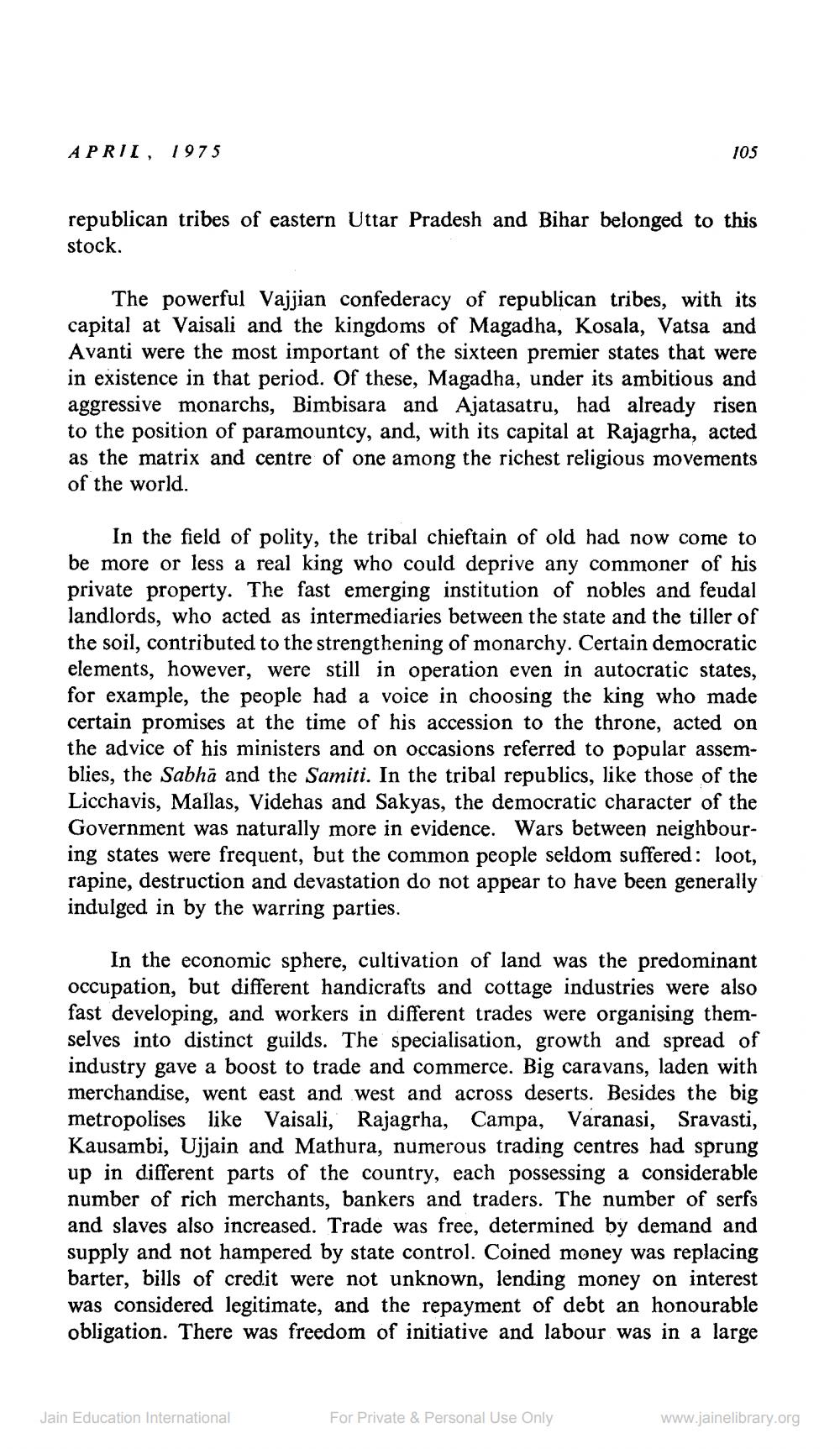________________
APRIL, 1975
republican tribes of eastern Uttar Pradesh and Bihar belonged to this stock.
105
The powerful Vajjian confederacy of republican tribes, with its capital at Vaisali and the kingdoms of Magadha, Kosala, Vatsa and Avanti were the most important of the sixteen premier states that were in existence in that period. Of these, Magadha, under its ambitious and aggressive monarchs, Bimbisara and Ajatasatru, had already risen to the position of paramountcy, and, with its capital at Rajagrha, acted as the matrix and centre of one among the richest religious movements of the world.
In the field of polity, the tribal chieftain of old had now come to be more or less a real king who could deprive any commoner of his private property. The fast emerging institution of nobles and feudal landlords, who acted as intermediaries between the state and the tiller of the soil, contributed to the strengthening of monarchy. Certain democratic elements, however, were still in operation even in autocratic states, for example, the people had a voice in choosing the king who made certain promises at the time of his accession to the throne, acted on the advice of his ministers and on occasions referred to popular assemblies, the Sabha and the Samiti. In the tribal republics, like those of the Licchavis, Mallas, Videhas and Sakyas, the democratic character of the Government was naturally more in evidence. Wars between neighbouring states were frequent, but the common people seldom suffered: loot, rapine, destruction and devastation do not appear to have been generally indulged in by the warring parties.
In the economic sphere, cultivation of land was the predominant occupation, but different handicrafts and cottage industries were also fast developing, and workers in different trades were organising themselves into distinct guilds. The specialisation, growth and spread of industry gave a boost to trade and commerce. Big caravans, laden with merchandise, went east and west and across deserts. Besides the big metropolises like Vaisali, Rajagrha, Campa, Varanasi, Sravasti, Kausambi, Ujjain and Mathura, numerous trading centres had sprung up in different parts of the country, each possessing a considerable number of rich merchants, bankers and traders. The number of serfs and slaves also increased. Trade was free, determined by demand and supply and not hampered by state control. Coined money was replacing barter, bills of credit were not unknown, lending money on interest was considered legitimate, and the repayment of debt an honourable obligation. There was freedom of initiative and labour was in a large
Jain Education International
For Private & Personal Use Only
www.jainelibrary.org




